I was inspired by a recent purchase to look at a newer figure from Safari, probably the second most popular species of giraffe in toy form. I am of course speaking of Okapia johnstoni (Sclater, 1901). The information about this species has been covered in fantastic detail on previous reviews of figures of this animal, so doing so again would be unnecessary (for those details see the in depth review by OkapiBoy, I seriously have no way of adding on!)
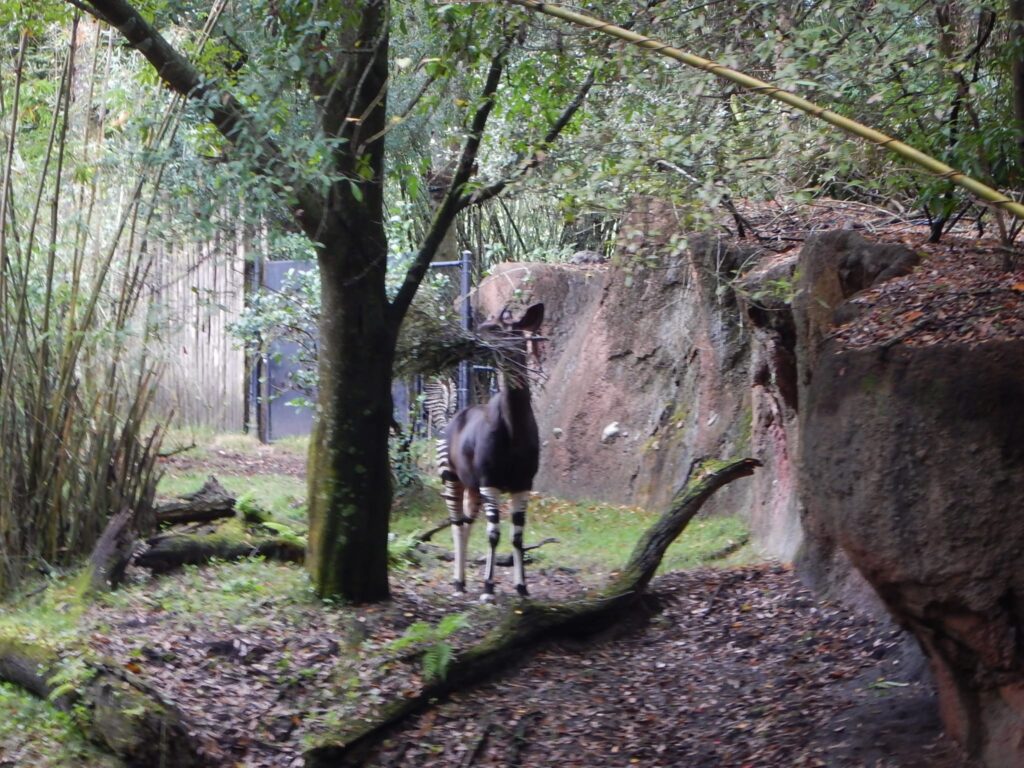
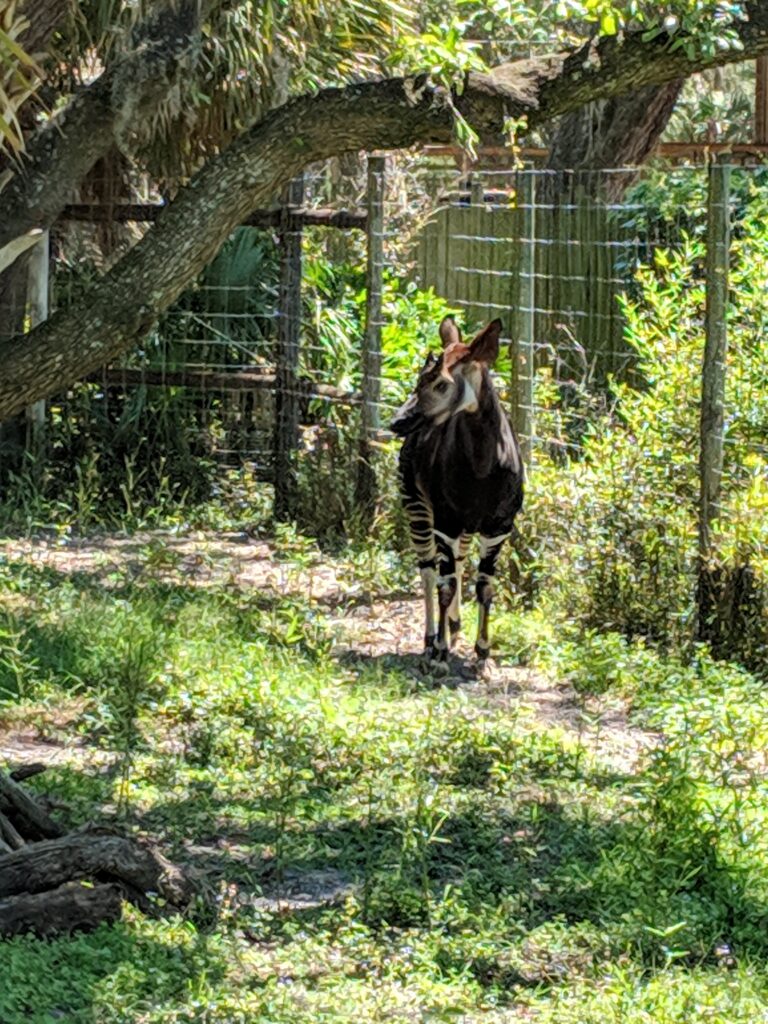
The okapi is easily one of my favorite ungulate species, if not my absolute favorite, and I definitely have a weakness for adding them to my collection. While I stated that they are the second-most common giraffid species made as a figure, that obviously is entirely because the only other species is the giraffe itself (wide variety of subspecies notwithstanding). That said, a little quick research of figures of the species shows that there have actually been a large number of them made since the earliest days of animal toys/figures in the 1950s. In 2022 Safari released a new model, catalogue number 100732, to replace their retired 1999 version, so how is it?
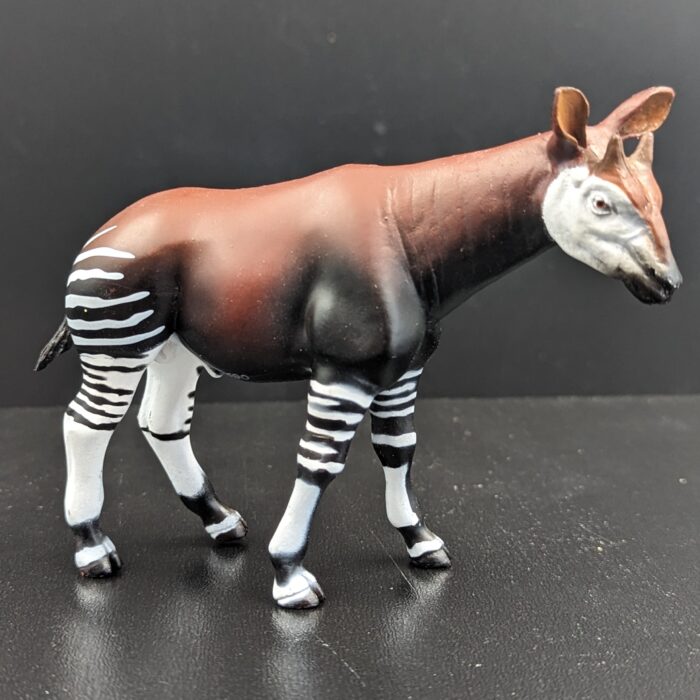
Overall, I would say that they did a remarkable job in producing a worthy figure of this amazing and beautiful animal. It stands about 7.8cm at the shoulder, making it roughly 1:22 to scale, so matches will with most modern animals/mammal figures scales. It has the heavy musculature and build that we expect from the live animal, posed in a fairly relaxed, forward facing pose. The neck shows a number of folds in the skin, as it is turning to its right, but the body is otherwise quite smooth. Around the shoulders and haunches there are a few creased areas as well. The tail swings freely from the back, ending in a large tasseled tip. The entire figure is finished with a smooth texture and glossy paint.

The paint job is very well done (this is a first-run figure, always get those if you can). Most of the back of the body and neck is a ruddy brown colour; on the neck this colour carries around the sides where it shades into a very dark brown throat. Likewise on the torso, most is the uniform ruddy, again shading on the belly to the same dark brown to almost black. This same darkening is seen prominently on the shoulders, and rump and haunches. Okapis can be variable in the darkness of their coats and the amount of shading from light to dark but the overall effect is very naturalistic. The tail is almost black which, while acceptable, should probably have carried more of the ruddy brown into the otherwise darker tip.
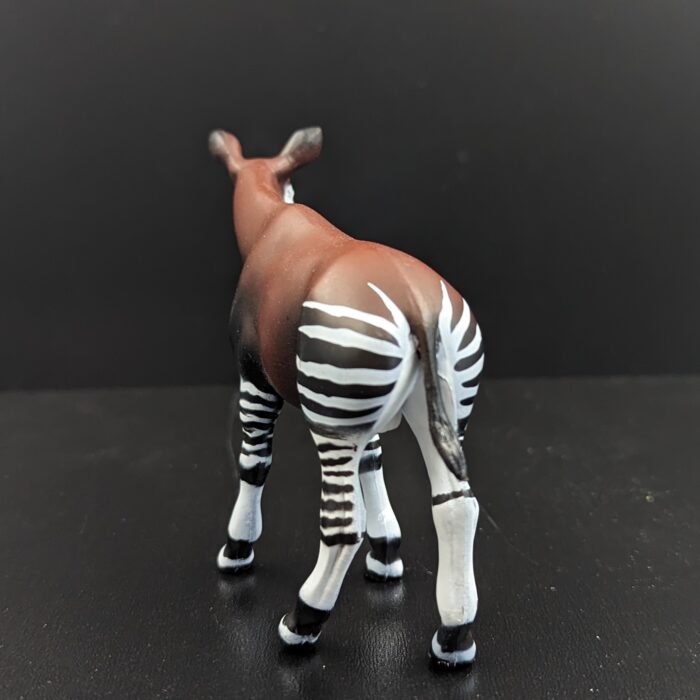
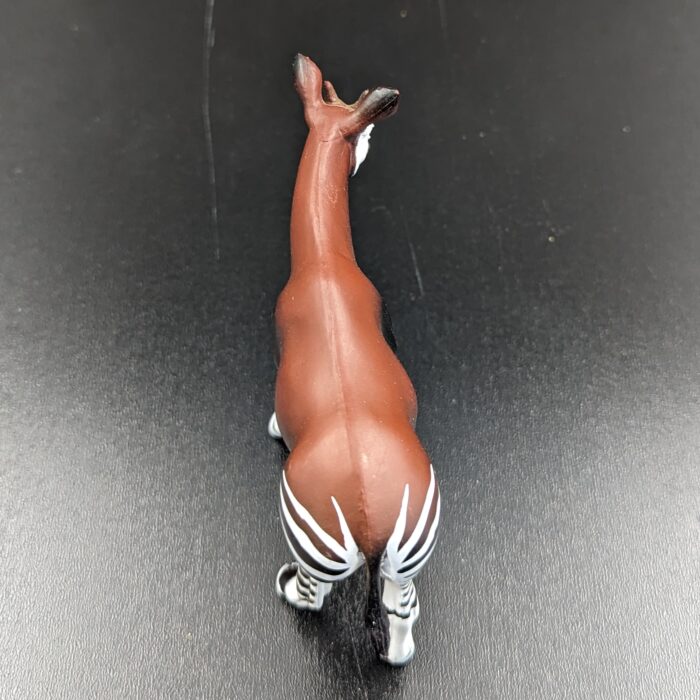
The most distinctive element of the okapi pattern is the foreleg and hindquarters striping. Here, Safari appears to have done a very good job of capturing the white stripes and bands seen here. This includes having the stripes on the legs be wavy, of variable width and spacing, and varying between full white bands and tapering points partway across the limbs. The stripes on the rump could have been thinner, with more stripes able to fit, but the variability of okapi patterns keeps the Safari interpretation allowable. The socks on the lower hindlegs of the figure are left completely white between the hock and fetlock (to borrow horse terms!) which is then black; the foot itself is white, with a black hoof. The front legs are similarly coloured, except with the very front being a black line along the front of the forelimb (again, seen in some but not all okapi individuals). Altogether, a great representation of the counter-shaded camouflage of the body, coupled with the dappled camouflage patterns of the legs.
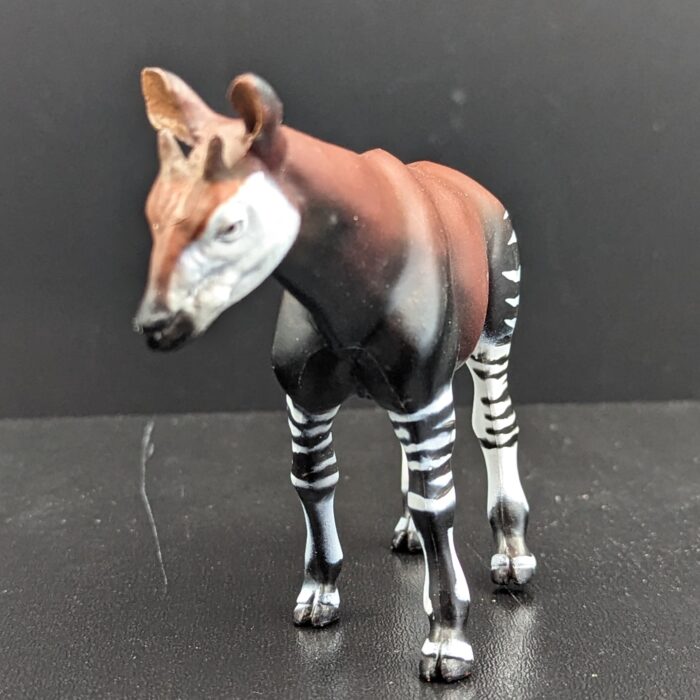
On the head and face, Safari clearly spent a lot of time and effort. It was inevitable that comparisons would be made between this model and the 1999 model discussed in this post. I’ve already discussed the sculpt and colour scheme of the body, which shows marked improvement. The head of this model is much deeper and heavier, as would be expected for a giraffid. The face is much more filled out, with a thicker jaw line and more sloped snout. The lips of the muzzle are also more clearly sculpted. The ears appear appropriately wide and forward facing, much more cupped than the previous model. The distinctive ossicones are sculpted to be more pointed, slightly recurved and horn-like, indicating a male individual; this would be confirmed by a quick examination of the undercarriage 😉 which is indeed sculpted.


The paint job on the face and head also show huge improvement. Whereas the original had only white highlights around the eyes, the new model has the face more accurately painted. The very dorsal margin along the top of the head and snout is the lighter ruddy brown extending to the all-black muzzle. Below this, from the base of the ears to the bottom of the chin, the face is white, with some shading and muddling of light brown. Again, for more accurate to the face colouration of an okapi. The back of the ears are dark brown, with the interiors shaded from light to dark. The ossicones are the same solid ruddy brown with no white tips (as with all of these colours, that varies in individuals). The eyes have also changed; instead of a black oval with trailing eye liner, the eyes are now smaller and painted distinctly; the eye opening and lids are ovate with creases and folds, painted white with bit of dark wash. They eyeball itself is painted with a black pupil, ringed with a thin orange iris; perhaps this is meant to invoke reflection of dappled sunlight (it should probably be more brown. Around this is an edge of white indicating just the hint of the sclera (as would be expected in most mammals)
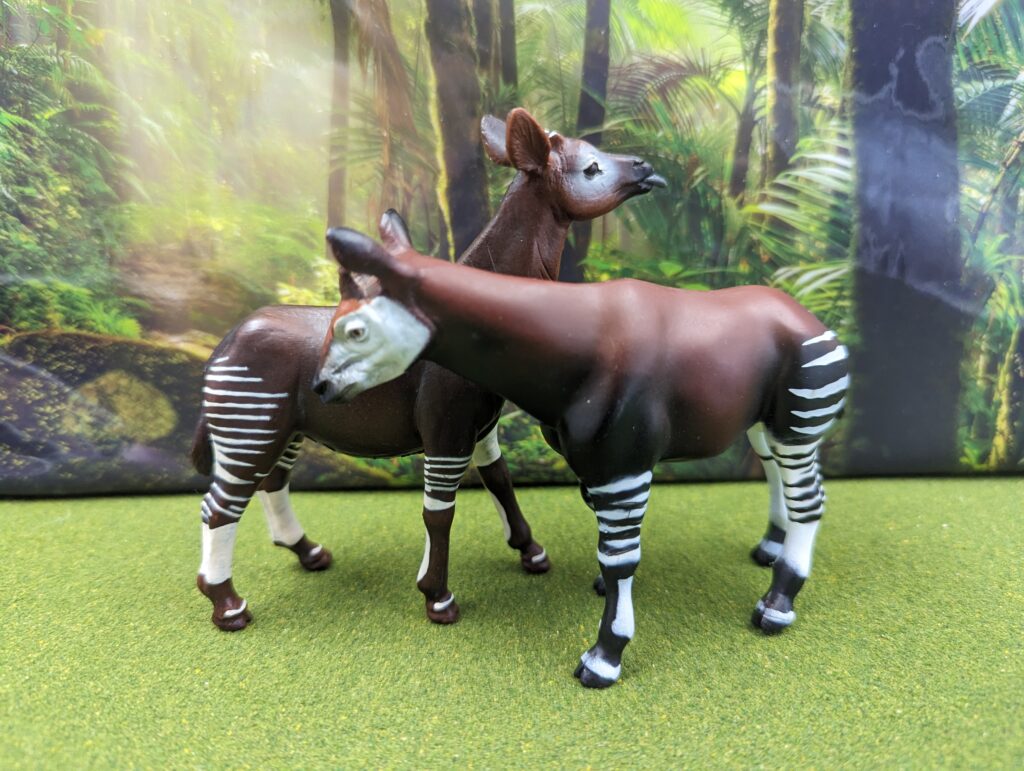
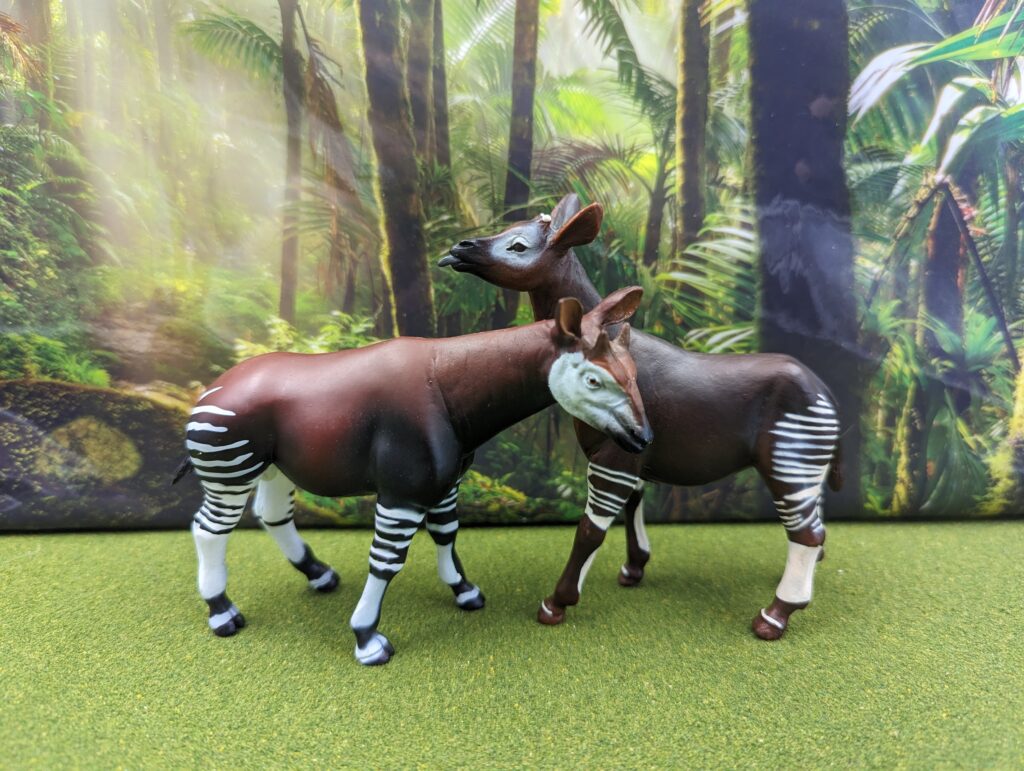
Looking at the two models, the newest offering from Safari has clearly been designed to more accurately depict the hefty, forest-dwelling giraffid we know. Looking at it next to to the original, it is possible that the 1999 version was based off of the original illustrations of museum mounts, which often showed a much skinnier animal with thinner legs. So the two together could make for an interesting (to some people…) comparison of original and more natural illustrations. The two models together wouldn’t make a great male and female pair though; the 1999 might be more gracile (and…no ventral anatomy) but the ossicones are probably just a bit too big to be a female. Maybe. They’re quite a bit more rounded.
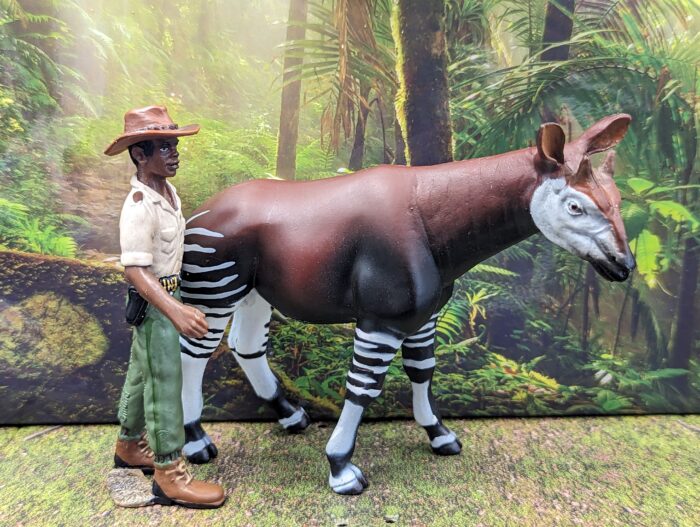
I’ll admit I was a bit loathe to compare this model to the retired one. It has been over two decades, and expectations and production capabilities have come a long way since then for all collectors, sculptors, and figure makers. I would say that Safari has brought a true A-game to this model and highly recommend it, but I would still keep my 1999 version as well–and encourage anyone who can, to get both as well! More okapi figures are always great, but that 1999 figure, to me, was also a watershed moment for Safari, where they truly started making collection-worthy figures in my opinion (versus straight up toys). In short, get this new okapi, it’s a beauty. I simply had no choice!
Disclaimer: links to Ebay and Amazon on the AnimalToyBlog are affiliate links, so we make a small commission if you use them. Thanks for supporting us!



